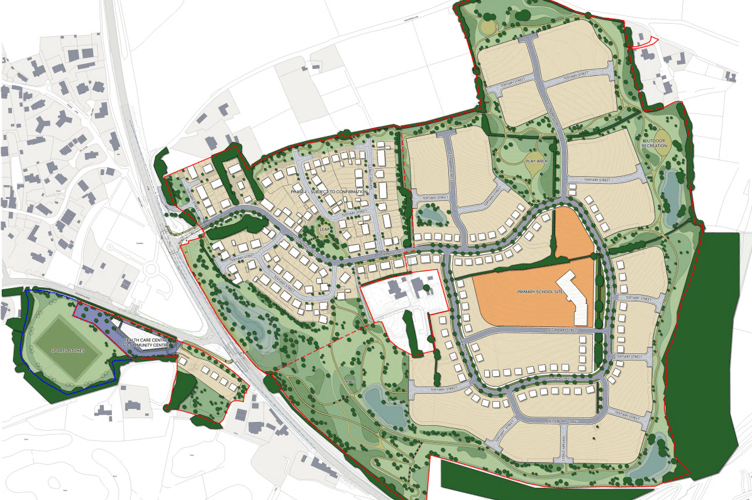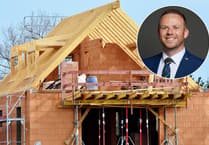EACH week, hundreds of planning applications come before Cornwall Council’s planning department, seeking to win approval for various plans right across the Duchy, with some concerning Holsworthy handled by Torridge District Council.
These plans can comprise of a number of different reasonings – ranging from permission to replace windows or listed building consent ranging up to large house building developments or changing of use of a building, for instance, from an office to a café, or flats.
Within this large and often complex system, there are a number of formats from which planning advice and approval can be sought.
These range from full applications where all the details which comprise a proposed development or work to a building are submitted, to outline applications, where further details are yet to be confirmed, for example, an outline application with reserved matters for appearance may not confirm the final proposed development but rather seek permission in principle.
An example of this is one for an outline permission for 20 dwellings on land with reserved matters for appearance and scale; the reserved matters would require further permission later for their inclusion.
Other types of applications include pre-application advice requests, where would-be developers submit often outline proposals to a local authority to ascertain whether it is likely to gain support or not prior to submitting a planning application.
The vast majority of applications are decided by planning officers employed by a local authority under ‘delegated powers’, meaning they do so on behalf of their employer, however, some applications are ‘called in’ by local councillors to be discussed at an area’s strategic planning committee meeting, meaning the final decision rests with a committee of councillors.
Wadebridge residents asked for opinions
A new website has been set up to allow Wadebridge residents to comment on plans to deliver much-needed new homes in the town.
Persimmon Homes Cornwall & West Devon has submitted a hybrid application to bring 550 new homes to Wadebridge, with outline permission being sought for up to 400 homes and full approval for an additional 150 as the initial phase.
As part of its commitment to consulting with the local community, Persimmon has released a new website for local people to input into the plans and express their views on dealing with the housing crisis. There are currently around 25,000 people on Cornwall Council’s housing waiting list.
If approved, the development would see land being gifted through a Section 106 agreement to the community for an on-site primary school, and a new medical centre with dental provision and a sports pitch, off-site and closer to the town centre. The scheme also incorporates public open space and fully equipped play areas.
All properties will be zero carbon-ready, equipped with sustainable features such as air source heat pumps, and electric vehicle charging points. Biodiversity net gain would be delivered on-site, with a proposed green wildlife corridor providing new ecological habitats, and a ‘Green Buffer’ between existing infrastructure and any future development, alongside secondary corridors dividing the development blocks and linking the green wildlife corridor to the rural edge.
The site, Church Park, is in the south-east of the Wadebridge, a town identified as a growth site in the Council’s Local Plan and will help address Cornwall’s housing land shortfall. The scheme would also ringfence 30% of the properties for a housing association to alleviate local need. Primary road access will be provided from the A389, whilst a new pedestrian and cycle access connecting to the wider town and green corridors are part of the proposed plans.
The managing director of Persimmon Homes Cornwall and West Devon, Andy Hill, said: “I’m pleased to announce Persimmon has released this website for local people to have their say on our application to deliver much-needed new homes and key infrastructure in Wadebridge.
“Our plans include substantial investment housing association properties, land for a school on-site, and the delivery of a medical centre or sports provision for the town, demonstrating our commitment to supporting local services alongside tackling the local housing crisis.
“With a range of house types, sizes, and tenure, this integrated and sustainable residential community will have bring a whole suite of benefits to the area, as well as ecological enhancements and utilise outdoor space.
“We look forward to working with councillors, residents, and the local authority to bring to life the vision of Wadebridge’s role as a strategic growth town.”
Replacement for roof approved
THE replacement of a deteriorating slate roof covering for a listed building in Bude has been approved by Cornwall Council.
It is seeking the replacement of the deteriorating roof with one made out of reclaimed Delabole slate, with the property concerned located at 10 King Street, Bude.
The applicant told Cornwall Council: “However, the existing roof covering is beyond repair, with multiple gaps between the existing slates and no roofing membrane, leaving the property, No.10 at risk to severe leaks during heavy rainfall.
“To mitigate the impacts of this, the proposals include the use of traditional materials and building methods, which will replicate the existing appearance of the street scene whilst improving the buildings performance. It is proposed that the existing roof coverings to No.10, including the slates and associated lead work will be carefully removed, setting aside any suitable materials for re-use.”
The plans were approved without any additional conditions beyond those mandatory by Cornwall Council.
Proposal for affordable house
A planning application for permission in principle to build a house in Camelford has been submitted to Cornwall Council.
The location concerned is land adjacent to Sportsmans Field, Camelford with the applicant being Mr M Beal-Toms.
The site was described by the applicant as: “The proposal area comprises a relatively regular area of flat land that adjoins residential development to the north and east. The side is bound, and the area is predominately residential. It is currently laid to grass and kept in good order.”
A permission in principle consent route is an alternative way of obtaining planning permission for housing-led development which separates the consideration of matters of principle for proposed development from the technical detail of the development. The permission in principle consent route has two stages: the first stage (or permission in principle stage) establishes whether a site is suitable in-principle and the second (‘technical details consent’) stage is when the detailed development proposals are assessed.
A previous application for the site, under PA17/08203 was submitted in outline and duly refused and dismissed at appeal by Cornwall Council.
However, the applicant’s planning agent stated: “The key reason at the time of the appeal rested with the site being located in a rural location. Significant changes to local and national planning policy have occurred since this decision was made and we draw attention to the NPPF 2024 where there is a presumption in favour of sustainable development.
“Furthermore, the red line has changed where the proposal relates to single affordable dwellinghouse that immediately adjoins housing.”
The proposals concerned can be viewed by using reference PA25/06218.
- Keep up to date with the latest planning applications and other statutory notices (such as alcohol licensing and probates) that affect where you live by visiting our online Public Notice Portal – be the first to know by visiting www.publicnoticeportal.uk/cornish-and-devon-post-series





Comments
This article has no comments yet. Be the first to leave a comment.